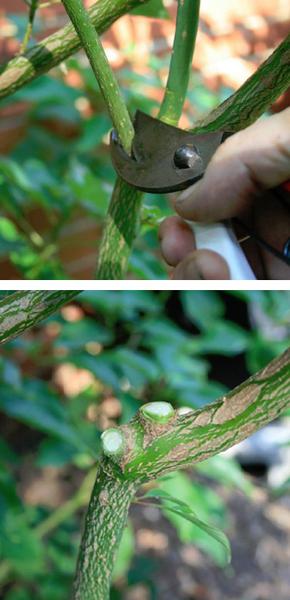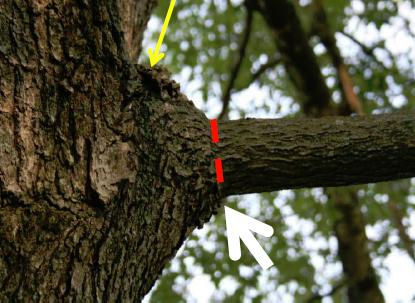How to Handle Damaged Trees and Shrubs
go.ncsu.edu/readext?952119
en Español / em Português
El inglés es el idioma de control de esta página. En la medida en que haya algún conflicto entre la traducción al inglés y la traducción, el inglés prevalece.
Al hacer clic en el enlace de traducción se activa un servicio de traducción gratuito para convertir la página al español. Al igual que con cualquier traducción por Internet, la conversión no es sensible al contexto y puede que no traduzca el texto en su significado original. NC State Extension no garantiza la exactitud del texto traducido. Por favor, tenga en cuenta que algunas aplicaciones y/o servicios pueden no funcionar como se espera cuando se traducen.
Português
Inglês é o idioma de controle desta página. Na medida que haja algum conflito entre o texto original em Inglês e a tradução, o Inglês prevalece.
Ao clicar no link de tradução, um serviço gratuito de tradução será ativado para converter a página para o Português. Como em qualquer tradução pela internet, a conversão não é sensivel ao contexto e pode não ocorrer a tradução para o significado orginal. O serviço de Extensão da Carolina do Norte (NC State Extension) não garante a exatidão do texto traduzido. Por favor, observe que algumas funções ou serviços podem não funcionar como esperado após a tradução.
English
English is the controlling language of this page. To the extent there is any conflict between the English text and the translation, English controls.
Clicking on the translation link activates a free translation service to convert the page to Spanish. As with any Internet translation, the conversion is not context-sensitive and may not translate the text to its original meaning. NC State Extension does not guarantee the accuracy of the translated text. Please note that some applications and/or services may not function as expected when translated.
Collapse ▲With the recent storm you may be left wondering how to take care of damaged trees and shrubs in your yard. While smaller jobs can be tackled with the right tools, larger removal and pruning is often best left to professionals. But what’s the best way to do the work yourself, or find someone to work with?

Remove broken branches at the branch collar to promote proper healing. Image credit: Dr. Barb Fair, NCSU.
For minor damage to trees or most damage to shrubs, often the right set of tools is all you need. A set of bypass pruners, loppers, and a small handsaw will take care of most small pruning jobs (detailed discussion, includes pictures, of tools can be found by clicking here). Chainsaws should only be used if the operator has proper personal protective equipment and has taken chainsaw safety training.
While most pruning is best left to the winter when plants are dormant, you can always prune damaged branches. There’s no benefit to leaving dead or damaged tissue on a plant, as it can often be a place for disease to take hold. For branches on shrubs, it’s often best to cut back cleanly to the nearest larger branch or trunk.
For smaller tree branches, cut back to the nearest side branch, or, if cutting back to the main trunk, make sure to cut just outside the “branch collar.” This area can be clearly seen on many trees, and is where the branch widens out as it reaches the trunk. This special zone is better at healing, and will set your cut up for success. Never cut a tree branch flush with the trunk, as this type of cut is difficult to heal and will leave a large area exposed to disease and drying out.

Dashed red line shows correct cut, just outside flared collar. Another indicator of where to cut, the branch bark ridge is marked at yellow arrow. Image credit: Dr. Barb Fair, NCSU.
Removed debris can be placed either into brown yard waste bins, or, if you don’t have yard waste service, can be taken directly to the Yard Waste Facility at the Waste Disposal & Recycling Center at 2115 East Club Blvd. There is a small fee for yard waste disposal.
For removal and pruning of larger trees, it is worth hiring a tree care professional. A certified and insured professional has not only demonstrated a commitment to their profession and proper tree care, but receives ongoing training to stay up to date with current best practices. A detailed guide on different types of certifications, and how to find a professional near you, can be found by clicking here.
Further Reading
Pruning Trees and Shrubs
“Before the Cut” Dr. Barb Fair, Extension Horticulture Specialist and Assistant Professor Horticultural Science
“Tools to Make the Cut” Dr. Barb Fair, Extension Horticulture Specialist and Assistant Professor Horticultural Science
“General Pruning Techniques” Dr. Barb Fair, Extension Horticulture Specialist and Assistant Professor Horticultural Science
Hiring a Professional
“How to Hire a Tree Care Professional” Dr. Lucy Bradley, Extension Specialist, Urban Horticulture and Karen Neill Retired Extension Agent, Agriculture – Urban Horticulture Guilford County




